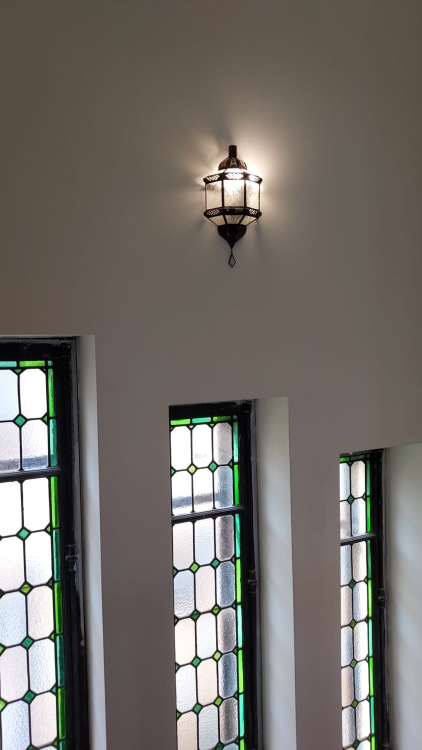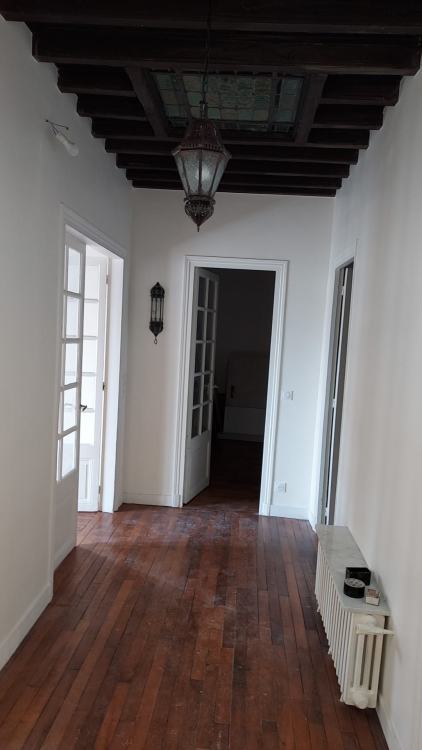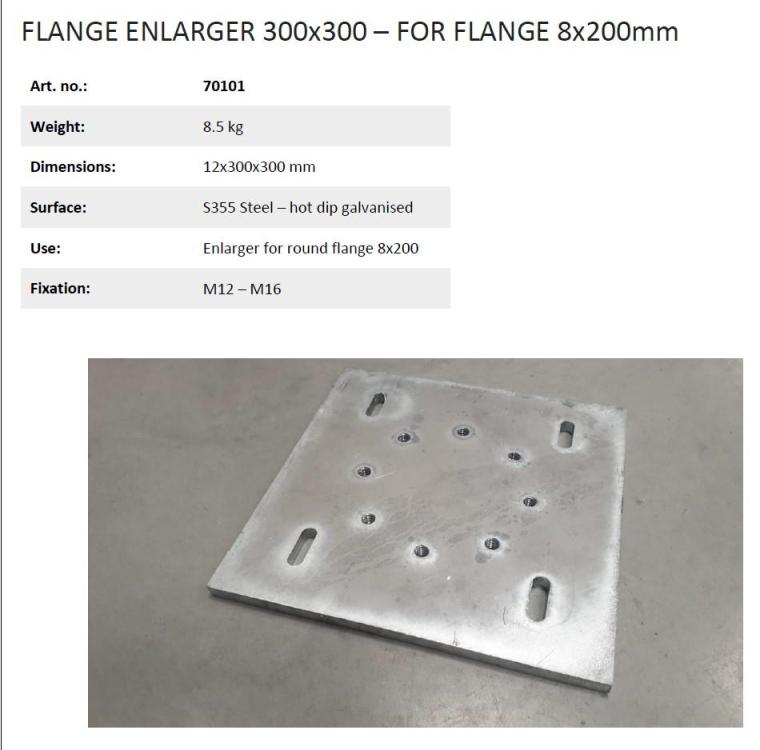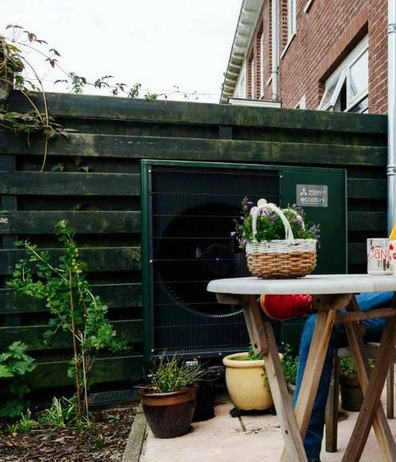Leaderboard
Popular Content
Showing content with the highest reputation on 06/16/23 in all areas
-
2 points
-
2 points
-
So - Attempt #1 of trying to build my house failed - Made Ground (Poor soil bearing), a buyer who wouldn't grant me legal permission to access the mains water after I sold and changed their mind after I'd let go all the builders, and my planning permission extension was refused. Attempt #2: Re-Applied for Planning permission from scratch - preliminary decision due July, final decision August 2023. Place my house back on the market in the meantime somewhere between those two dates. Finally I need to find a solution for the poor soil / made ground. Today was that day! The Structural Engineer got the Ground Screw company to come onsite and put a 1.5 meter screw into the ground in 5 different places and do a pull test against each one. They each held over 4 tonnes of pull pressure which is good and the results will inform the Raft Design so I can get it priced. It was all done with hand tools with a motor assisting the Screw insertion / extraction running on 240v via an Extension lead. Then they put a tripod above the screw and a measurement device to determine the force trying to pull it out. Probably looking at 30 or so Ground Screws and a number of Screw Piles for point loads & using a laser level. Had a good chat with the team and they have 5 years of experience and have been to Holland where they source their system from. Due to the coastal conditions there they typically use 6 meter screws! Some soil conditions eat away at screws over time 30-40 microns per year which gives you 50 years guarantee on a 3mm thick screw to allow up to 1500 microns to be eroded. They had heard about some cheaper Chinese screws that were pulled after 3-4 months for a different reason and they had started to rust as their galvanisation was not thick enough. Very bad if that happens! The team do a lot of extensions, shipping containers and garden rooms but houses too. If the screw is exposed more than 500mm you need bracing - this can happen if the ground is sloped. The system should save on soil muck away and concrete costs hopefully. Cost wise I'm looking at @ 5K for the ground screws vs digging 2.2 meter strip foundations and muck away costs / concrete as the alternative. You can sit a foundation on top of the screws and this may mean you don't need a Radon barrier as there is airflow underneath? I'll go with whatever the Structural Engineer recommends though. Anyway, thought I'd have a big JCB onsite but this took about 4 hours with powered hand tools and gave me confidence in the system and the team behind it which helps. Educational Day all in all!!1 point
-
They might have lost all the old reports due to time since the last visit, and want to start again from scratch. Can you try and record it so we can all have a listen. "We don't appear to have a record of seeing A,B,C etc" ....."Kin chuffing mother........rs..... it was a baldy bloke, Glasses, stubble"......... Oh, he retired, just after the Queens Jubilee. The Silver Jubilee. How long did you say you have been working on this project ?1 point
-
No, warm water is you saviour, and im sure your aware f ball and Lvt flooring need a spotless and clean surface hence why I keep harping on about warm water. If you heat the paint your in danger of burning it to the floor then that's more work and chemicals won't touch waterbased but then you have to make sure the floor is chemical free if they did work. I can only say your scraper with the addition of warm water and a scourer is the way.1 point
-
To much heat, if its waterbased you could hire a floor buffer for your area.1 point
-
1 point
-
Unless the electric comes from a renewable source, the electric car does no better than the ICE. Electric vehicle only really win when the grid is renewable or a good percentage.1 point
-
Good info. To me this is better than the average site in the se where we've been building on tips for decades. Founds to 2.2m seems conservative, with firm ground at 1m. This has really got my interest xnd I keep thinking "what would I do". Much as I love innovation I think oois would stick with traditional here. The 50 years life often surprises people. When deciding what load needs to apply, there is a conscious input to make on this because of the increasing possibility of high wind and snow loads. The Romans overdesigned.1 point
-
Agreed. See diagram D5 on page 144 of the Approved Document to Part B Volume 1 - Dwellings (it's on line) You count the number of storeys at the point where it has the greatest number but exclude any basement storeys.1 point
-
1 point
-
1 point
-
thanks. i have plenty of cls off-cuts. i'll put some diagonal bracing in the stand as well just in case. i'm sure it can't hurt!1 point
-
1 point
-
They've certainly sorted their act out. Just received my reclaim in my account, took 2 months exactly from the day I posted off the claim. Happy with that! The cash is badly needed! The amount was £500 light, so I'll wait to see what they've not paid me for.1 point
-
Thanks Folks, Lots to think about. I had an extensive ground investigation report commissioned with window sampling and dynamic probing. That's when I realized it was made ground. From the report: The sequence of strata encountered were consistent across the site and generally comprised; • Topsoil • Made Ground • Cohesive Deposits • Granular Deposits TOPSOIL: Topsoil was present to a maximum depth 0.20mBGL. MADE GROUND: Made Ground deposits were encountered and were present to depths of between 0.20m and 1.00mBGL. These deposits were described generally as brown slightly sandy slightly gravelly Clay and contained occasional fragments of redbrick. COHESIVE DEPOSITS: Cohesive deposits were encountered beneath the made ground and were described typically as brown mottled grey slightly sandy slightly gravelly CLAY with occasional subangular to subrounded cobbles. The strength of the cohesive deposits typically increased with depth and was firm to stiff or stiff below 2.20mBGL in the majority of the exploratory holes. GRANULAR DEPOSITS: Granular deposits were encountered below the cohesive deposits and were typically described as brown/grey sandy clayey fine to coarse subangular GRAVEL with occasional cobbles. Based on the SPT N values the deposits are typically medium dense and become dense with depth. The pull test was using 1.5m groundscrews - yep, just like a big wood screw, stainless steel. My original SE was asking for 2.2m deep strip foundations before I sought alternatives, groundscrews / mini-piles being a potential solution. That felt like too much risk, too close to boundaries and would need perfect weather. The groundworker was sure a raft would be fine without any fuss but he can't sign it off, that has to be the SE. Good idea to tease out options and thanks for the extensive explanation above. I'd have to read it a few times to fully get the gist but worth looking into. The flange appears to just screw onto the top of the groundscrew and isn't further welded. Lifespan of a house, not something I had though about before this exploration! Expiry dates like cartons of milk - I can see insurance firms getting in on the action and charging more for older houses someday! But 50 years will see me out!1 point
-
Nope*. Reason being the count of floors is from the principle level upwards. No additional fire protection measures needed. *Raised with BCO before drawing submission, there were different opinions before agreement, and under NI regs.1 point
-
this weekend I'm planning to get the toilets plumbed in which includes installing the RWH header tank in the loft. here's a picture of the area I'm going to install the header tank and the header tank.. I was planning to build a table/stand for the tank to sit on so it's higher and has a slightly higher head. Also I can then install the manifold for the toilets near the floor level so they're easier to access if/when I ever need to turn a toilet off. Can anyone give some advice on what sort of supports I'll need within the stand to take the weight of the tank full? it has a capacity of 100 litres.1 point
-
Hi all, new joiner here. I have wanted to build my own house since I was a kid and now hoping to be able to do so within the next 5 or so years. I just discovered this forum so have signed up hoping to find some advice on my self-build journey. I am currently in the very early stages of planning and trying to work out if it's even feasible, what the first steps are, costs involved, what size house I could afford to build, when it might be possible to do etc. I will for sure be asking many questions on this forum, but if you have any links to useful threads or other resources for preparing for a self-build project, please do let me know.1 point
-
Small claims court will appreciate your trying to use the trade body to resolve the issue1 point
-
1 point
-
Getting over 4kw out of 3.3kwp of panels would make most people pretty happy! Just seen your edit saying youve got 12 panels not 8. Makes a bit more sense now1 point
-
wouldnt worry, as long as your house isnt new it will be leaky as hell anyway. If you start to fill up with condensation come the winter just buy a dehumidifier and leave it running 24x7. There are no trickle vent police who will raid you dont worry, they are all too busy tacking the pro-noun abusers on twitter.1 point
-
Trickle vents are not operated by the vast majority of people. They are simply not used for their intended purpose. As of June 2022, trickles vents are now required on replacements in England, unless appropriate background ventilation exists.1 point
-
Well.....the coating is equally vulnerable if damaged. No screws, so the screws won't leak, but they shouldn't anyway. Buy the best screws and the epdm washer twists itself down with the screw and completely seals the hole and protects the metal. I reckon my business did 250,000m2 of roof. = 2.5M screws. Any issues were of untightened or missing screws and apparent at first heavy rainfall....moral use an experienced cladder offering a year's maintenance. What slope?1 point
-
Get the roofing company to supply the access, that way they will Be keen to get it up and down, it’s installed the way they like it and there are less people involved to mess it up that’s what i did, and took advantage to repaint fascia’s and soffits while their scaffold was up!1 point
-
Get a £250 drone that has position hold and cameras that feed back to your phone. You’re on your own property - flick it over the roof 2/3 times a year and just record the video if you’re worried.1 point
-
1 point
-
1 point
-
1 point
-
I rented an aluminium platform tower for a week and they've not been back to pick it up yet 3 weeks later!! It's off hire but I looked into buying one for indoor / outdoor work. Can be moved and dismantled by one person although easier with two. Would buying one be an investment and you could always sell later to recoup some money?1 point
-
1 point
-
If they are replacement windows Your not required to have trickle vents At least in England1 point
-
Just get the meter fitted by shell and then move to octopus, that’s exactly what I did1 point
-
I'm still happy with the values though, for one set of panels on a room that didn't exist when I moved in.1 point
-
First I have heard of that. Mine is mounted to the front wall of the house under the kitchen window but will be screened from the road by shrubs when the landscaping is finished. Nobody mentioned planning requirements to me when siting it, and it was part of a major extension project with planning officers' involvement.1 point
-
1 point
-
Whack the ducts in, install a good quality airtightness membrane, hold the membrane in place with service battens at 300mm o/c's, and pump the bugger full of cellulose.1 point
-
0 points
-
0 points
-
Now I’ve done it . I rattled the cage with that staircase approval . BC said “ seems it was 6 yrs ago we visited , a long time … “ . Everyones a critic! Wants to come and take a look !!! Oh (expletive deleted)0 points
-
I can't get anywhere near those outputs using PVGIS, what's your secret - are you in south Spain?0 points
-
Forgot to mention … The treads are made off site and very exact . To achieve this they brought a hand held 3d scanner . Nice bit of kit ( all 27k of it ! ) - produced an accurate 3d model in seconds . I asked if I could borrow it to scan ‘things’ - they said no .0 points













